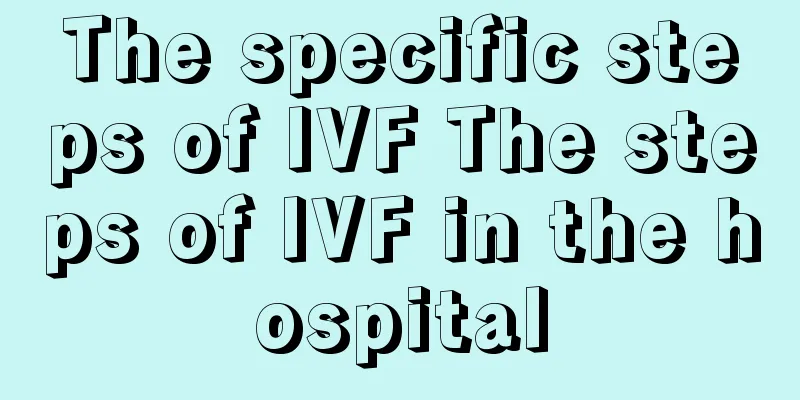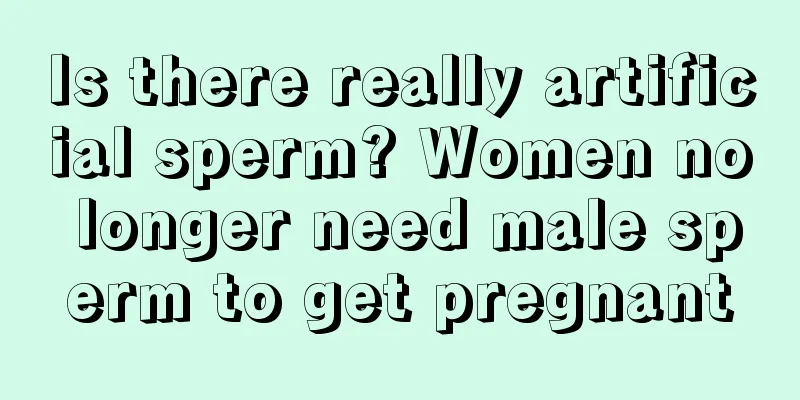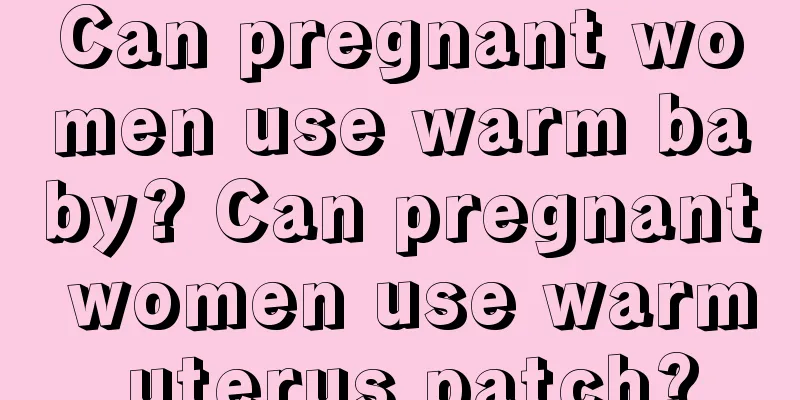The specific steps of IVF The steps of IVF in the hospital

|
Infertility is not terrible, IVF can help you. With the advancement of science, IVF is recognized by more and more people. IVF is undoubtedly the fastest way to solve the problem for families with fertility difficulties. However, what are the specific steps of IVF? Here is a detailed answer for you. Specific steps of IVF(1) Stimulate ovulation: Normal women only release one egg per month, but for in vitro fertilization, one egg is sometimes not enough, so different drugs can be used, such as recombinant human follicle-stimulating hormone (FSH) for injection, human menopausal gonadotropin hMG for injection, and human chorionic gonadotropin hCG for injection to enable the patient to release multiple eggs in one cycle. (2) Predicting ovulation: To have a test tube baby, you need to obtain eggs that mature before ovulation, so you must first determine the ovulation period. Clinically, you can monitor the development of follicles through basal body temperature measurement, cervical mucus examination, vaginal smear, and mainly B-ultrasound to determine the best time to give hormones to induce ovulation. (3) Egg collection: There are three methods, each with its own advantages and disadvantages. The method can be selected based on the patient's indications and objective and specific medical conditions. ① Laparotomy and egg retrieval: This is an early method. Its advantages are that during laparotomy, certain diseases can be corrected at the same time, such as fallopian tube adhesion separation and recanalization. It can also select appropriate eggs under direct vision and directly extract follicular fluid. The operation is easy and the egg collection rate is high. However, the operation is relatively traumatic and the cost is also high. ② Laparoscopic egg retrieval: This method is the most widely used. Under laparoscopy, eggs can be retrieved through puncture of follicles, while other pelvic lesions can be observed and certain feasible operations can be performed. The operation is less damaging. However, laparoscopic equipment and technology are required, and during laparoscopy, the CO2 (carbon dioxide) injected into the abdomen can reduce the fertilization ability of the eggs. ③ Ultrasound-guided vaginal egg retrieval: Egg retrieval is performed through puncture of the posterior fornix of the vagina. This method is particularly simple and safe, does not require hospitalization, and saves costs. However, the instrument is more expensive and the operation technique is slightly more complicated, and it is not as good as puncturing the number of follicles under direct vision. (4) Egg culture: The mature eggs obtained before ovulation are processed through special technology and wait for fertilization. (5) In vitro fertilization: The semen obtained from the husband under sterile conditions is processed to enable the sperm to penetrate the egg and become fertilization droplets. The droplets are then added to a culture medium containing the egg and a new cell, the fertilized egg, is formed through fusion of the two pronuclei. The egg is then cultured and when it divides to 4 to 8 cells, it can be transplanted into the uterine cavity. (6) Embryo transfer: The above-mentioned early embryos are taken out of the culture medium and injected into the uterine cavity. It is best to transfer 3 to 4 fertilized eggs at a time, which can increase the success rate of pregnancy after transfer. The conditions for successful embryo transfer are: the vitality of the fertilized egg itself, whether the endometrium is healthy, and whether there is any damage during the transfer process. (7) Post-pregnancy measures: When the embryo is successfully transferred to the uterine cavity, the pregnancy should be treated as a high-risk pregnancy, with close follow-up, various necessary hormone tests and routine examinations, and measures to preserve the pregnancy. Who is suitable for IVF?The causes of infertility can be divided into male and female causes: about 30% of the problems come from the male side, including abnormal sperm count, motility or morphology; erectile dysfunction, cryptorchidism, varicocele; history of mumps, previous urological surgery, prostate infection, cystic fibrosis or other family history of genetic diseases, which are all factors on the male side. In addition, about 40% of the problems come from the woman: blocked fallopian tubes, inflammation of the reproductive system, endometriosis or polycystic ovary syndrome, etc. Of course, about 20% of the problems exist in both husband and wife, and about 10% of infertility cannot be found medically at present. Among them, about 10% of infertility needs to be solved with the help of assisted reproductive technology. Specifically, the indications for "test tube babies" include the above mentioned: 1. Difficulties in the combination of sperm and egg due to fallopian tube factors on the female side; 2. Ovulation disorders; 3. Endometriosis; 4. Oligospermia and asthenospermia on the male side; 5. Female immune infertility; 6. Infertility of unknown cause. The dangers of IVFThe success rate of in vitro fertilization surgery is very high, and the harm it causes to women's bodies is not very great, so you should face it with a normal attitude. 1. The truly traumatic operation during the IVF process is egg retrieval from women, but currently egg retrieval is performed under general anesthesia. The operation only takes a few minutes and the patient will not feel any pain. Second, women only release follicles once a month, but the IVF operation requires the extraction of more than a dozen eggs at once. Will this lead to ovarian failure and amenorrhea? This is also a question that many people worry about. In fact, in the natural menstrual cycle, although only one mature follicle ovulates, many small follicles die at the same time due to the lack of sufficient follicle-stimulating hormone. IVF uses exogenous follicle-stimulating hormone to make those small follicles that were originally closed grow together, so in theory it does not affect the number of reserve follicles in the entire ovary. 3. What many female friends are concerned about is: Will ovulation-stimulating drugs increase the incidence of tumors? Will they accelerate aging? In fact, the use of ovulation-stimulating drugs does not have much to do with ovarian tumors, uterine tumors, and breast tumors, and does not cause any harm to the female body. |
<<: What safety precautions should be taken when babies play outdoors
>>: What should a woman who has just given birth eat? What are the taboos?
Recommend
How does a pregnancy test stick work? Is it necessary to use morning urine for a pregnancy test stick?
Many people like to use pregnancy test sticks to ...
Will the ovulation injection have any effect on the fetus?
After trying to conceive for several months, pros...
Why do babies not sleep at night? How to care for babies?
New parents deeply understand how difficult it is...
How to judge whether the baby is full of breast milk? Important signs that the baby is full
In daily life, many children grow up eating breas...
What should I do if my baby has rough skin?
The temperature difference between indoor and out...
What are the methods for removing phlegm from infants and young children? Four methods are recommended
Many infants and young children have phlegm in th...
How to stop children's bad behavior
Children love to talk back? How to stop children&...
How to choose baby rice cereal Baby rice cereal eating precautions
Baby rice cereal can help babies develop their ch...
How to give birth to a baby with an oval face
Chinese parents like to let their babies sleep on...
Will children with ADHD cough? Will children with ADHD scream?
Children with ADHD is a common phenomenon in dail...
How does baby dandruff occur? How to remove baby dandruff?
We often see that newborn babies have a lot of da...
How many days does a newborn baby get vaccinated? When does a newborn baby get vaccinated?
Newborns are not fully developed yet and have rel...
Can pregnant women eat pinto beans? What are the benefits of eating pinto beans for pregnant women?
Pinto beans are a food ingredient with high nutri...
Can black mouthwash remove tooth stains? Can black mouthwash remove dental calculus?
The main function of black mouthwash is to freshe...
What should I do if my child doesn't like to play with other children? How can parents guide isolated children?
People have different personalities, and their pe...









